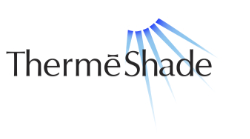ThermēShade Solar / Thermal / Optical Data
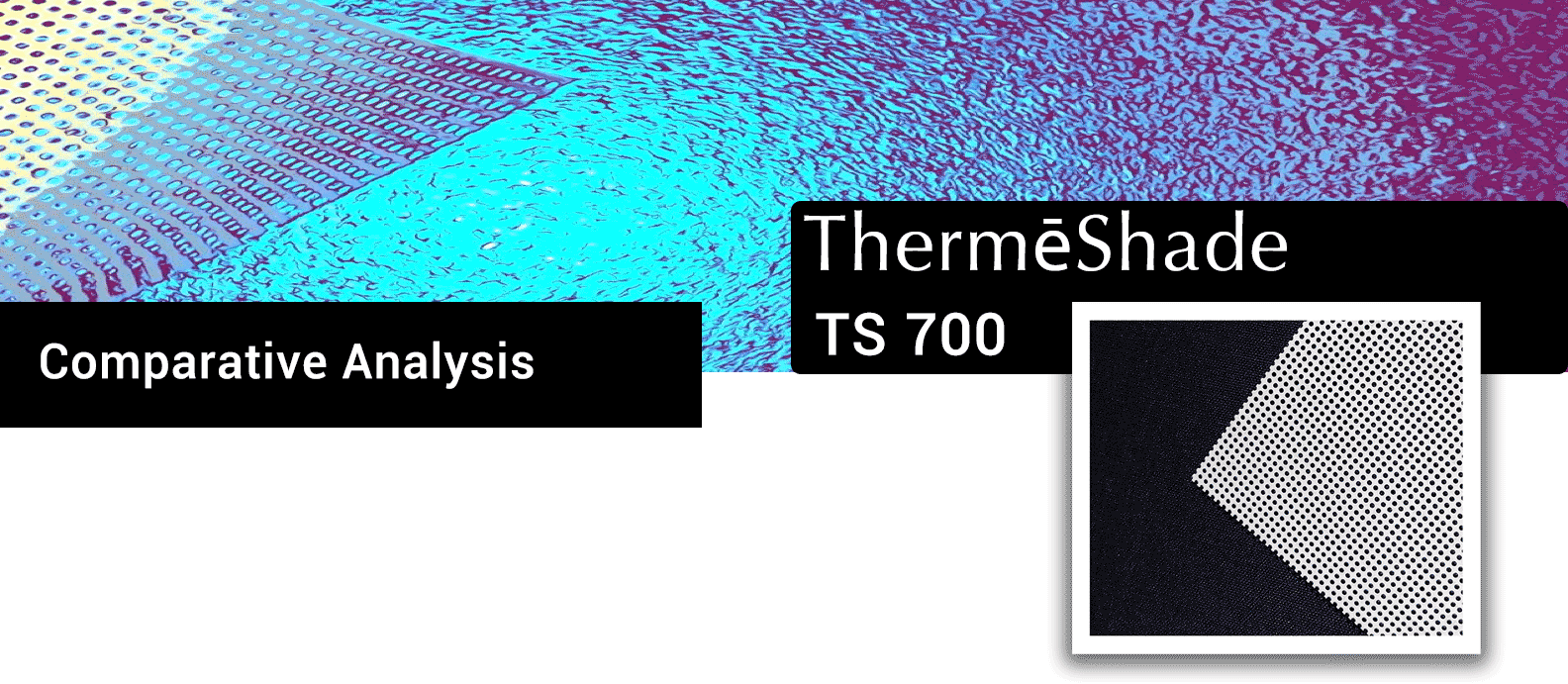
Various shade and tinting products were analyzed, measured, and compared for heat reflectivity, visible light transmission, and insulating properties. Most of the products evaluated reduced heat gain and improved insulation performance.
ThermēShade, however, transmitted the highest percentage of visible light.

| U – factor | Percent Improvement in Insulation |
SHGC | Percent Improvement in Solar Heat Rejection |
Visual Transmission |
|
|---|---|---|---|---|---|
| Base Window | 0.484 | 0.689 | 0.72 | ||
| Base Window + ThermēShade (34%) | 0.41 | 15.3% | 0.383 | 44% | 0.291 |
| Base Window + Low-E | 0.36 | 17.6% | 0.693 | -1% | 0.733 |
| Base Window + Mecho 5% | 0.37 | 23.1% | 0.414 | 40% | 0.063 |
| Base Window | Type | Width inches | Height inches | |
|---|---|---|---|---|
| ID 12 | Std Size – Wood + ID 102 Double Glazing | Fixed (picture) | 47.24 | 59.06 |
NFRC 100: Procedure for Determining fenestration Product U-factors
NFRC 200: Procedure for Determining Fenestration Product Solar Heat Gain Coefficient and Visible Transmittance at Normal Incidence
Vistar Energy Consulting

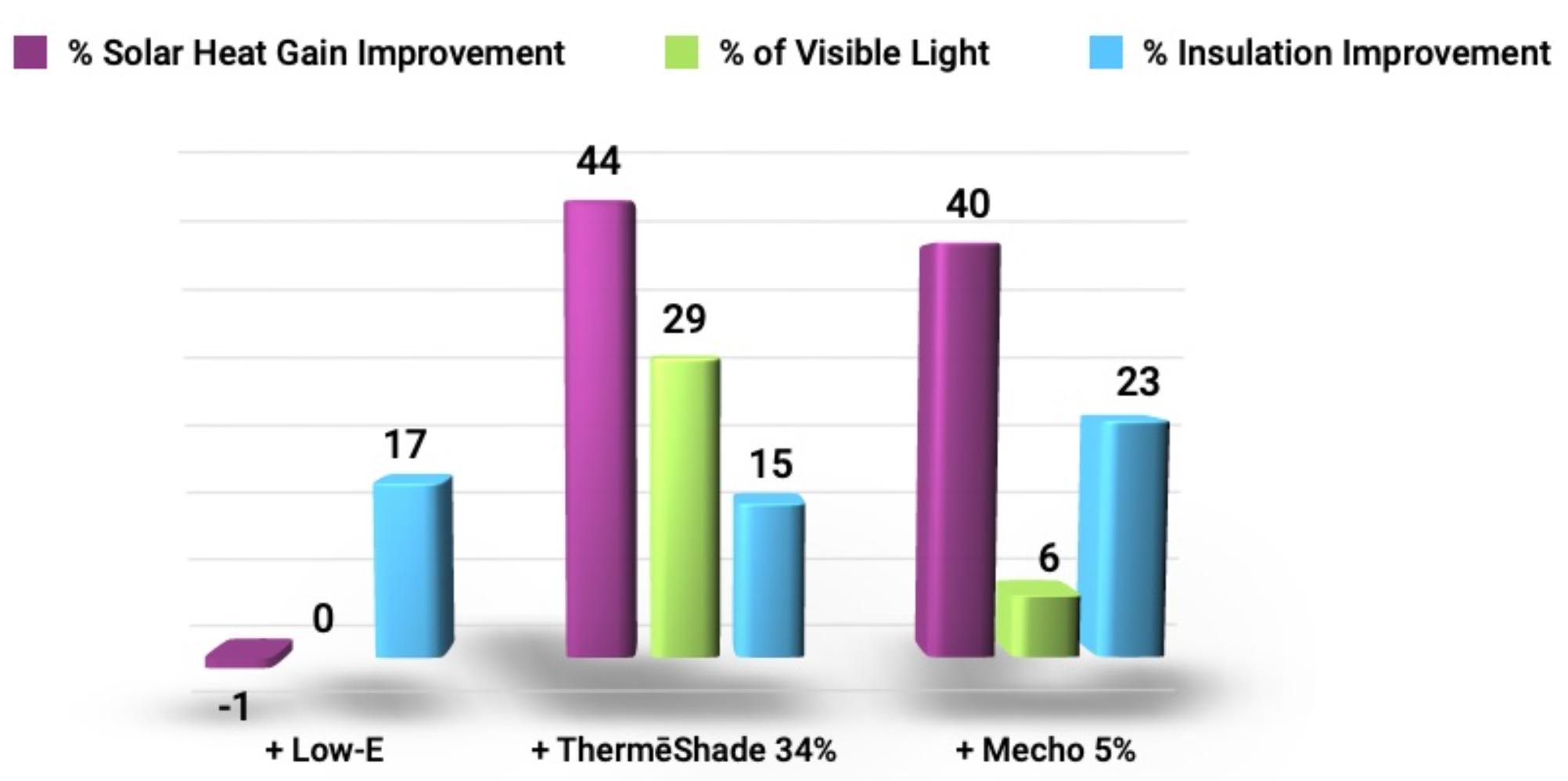

Simulation using data provided by Windows and Envelope Materials Group WINDOW 7.5 ~ Vistar Energy
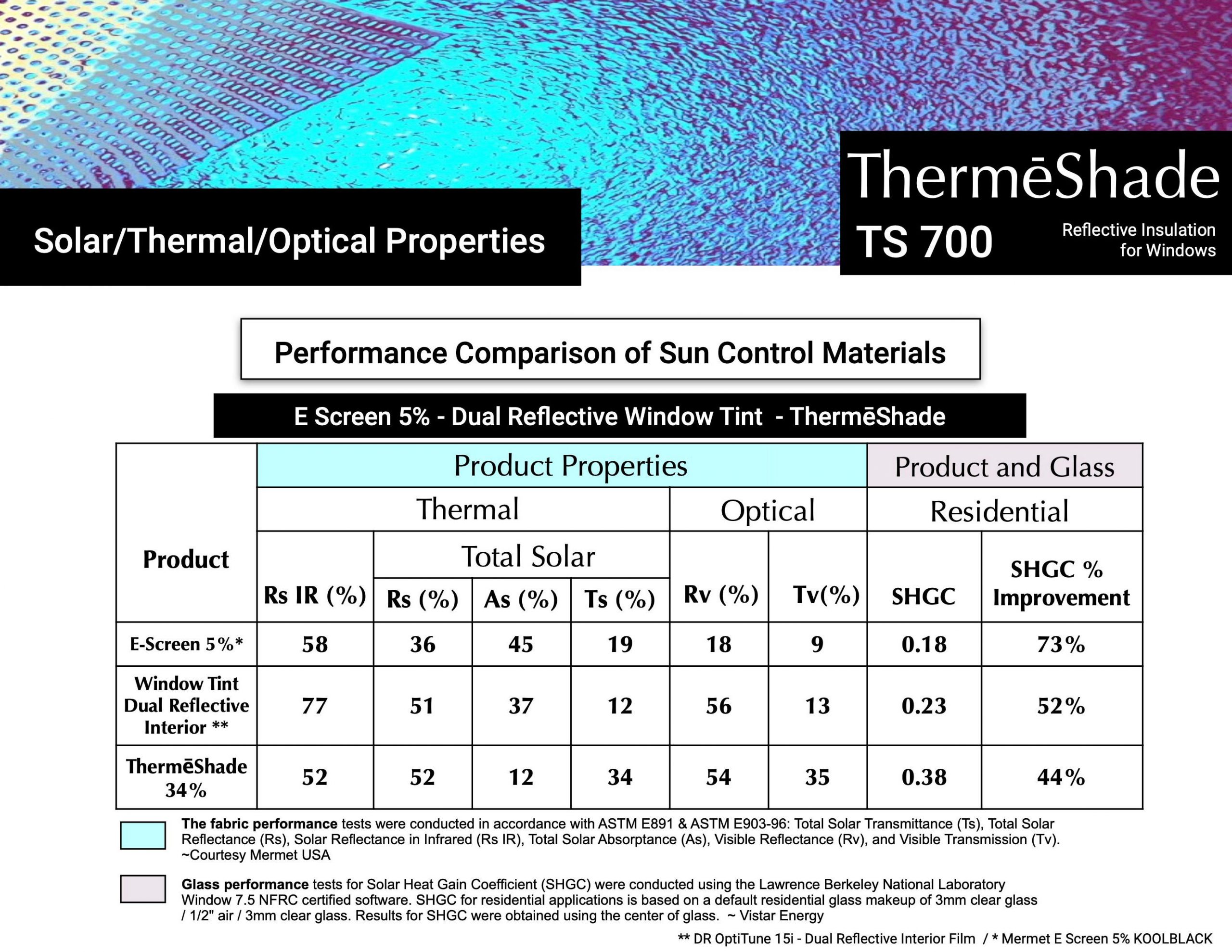
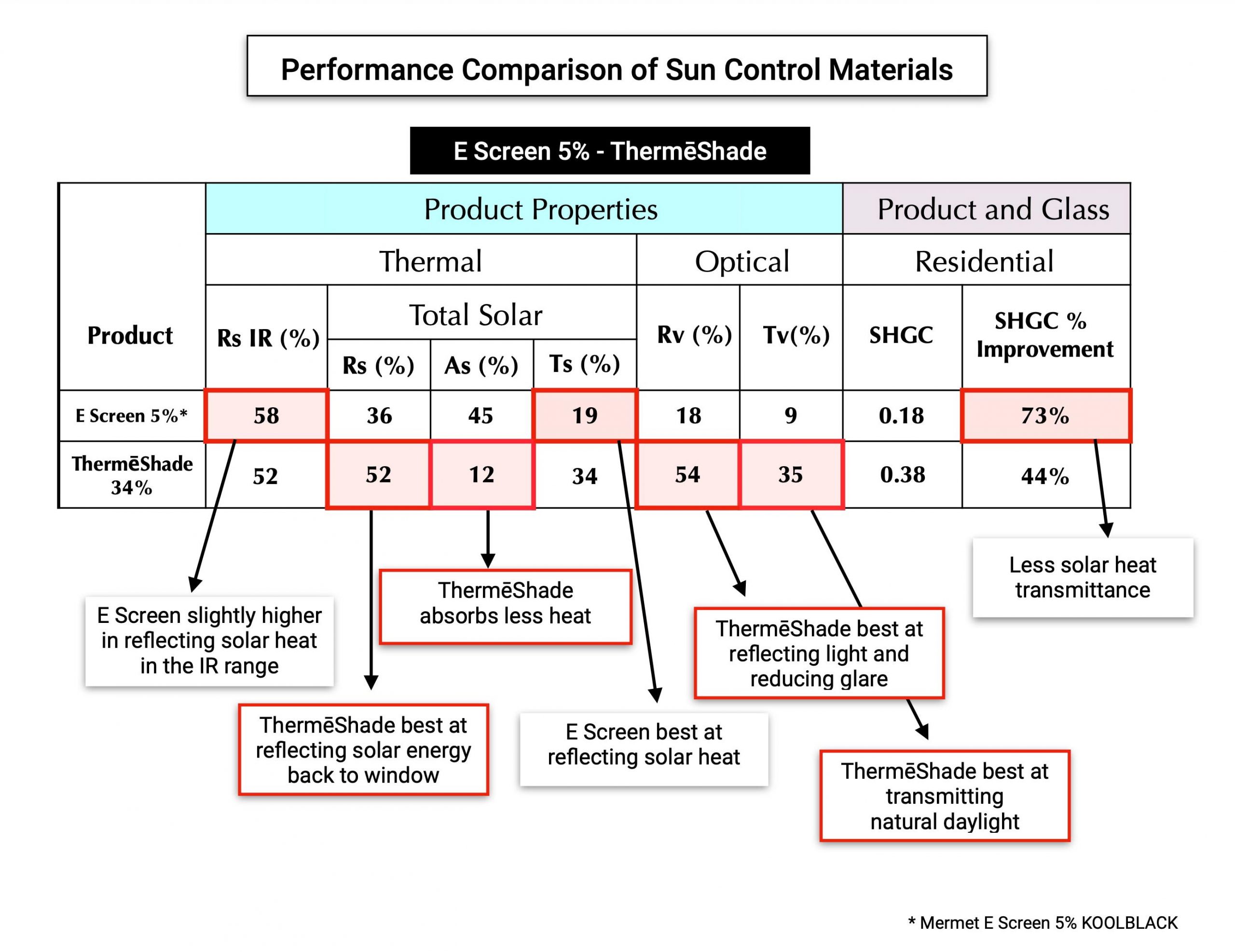
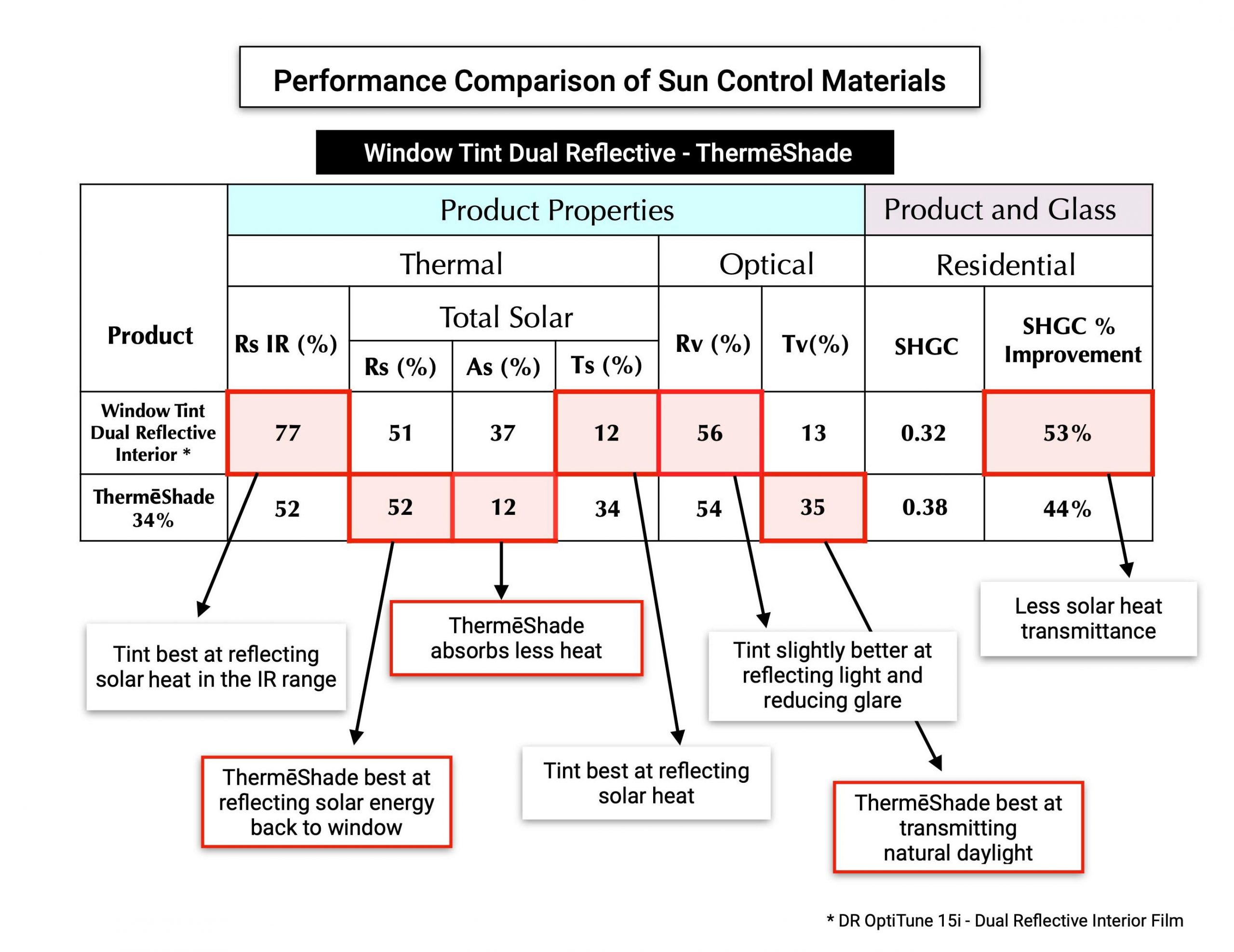

| SHGC | Solar Heat Gain Coefficient (lower is better) Amount of solar radiation admitted through a window or skylight directly or absorbed, and subsequently released as heat inside a building. The lower the SHGC, the less solar heat transmittance and the greater its shading performance. |
| Rs | Total Solar Reflectance (Higher is better) The percentage of solar energy directly reflected by the fabric. Higher the number the more heat the fabric reflects back toward the window. |
| As | Total Solar Absorbance (Lower is better) The percentage of solar energy absorbed by the shade fabric. This number will always be the opposite of Rs, so if RS number is high, the As will be low. |
| Ts | Total Solar Transmittance (Lower is better) The percentage of solar energy directly transmitted through the fabric. The higher the number the more solar energy is being allowed through into the building. The percentages of Rs, As, and Ts should add up to 100. |
| Tv | Visible Light Transmission (Higher is better for visibility) The amount of visible light (in the range of 400–700 nm) directly transmitted through the fabric. This includes both direct and diffused light. |
| Rv | Reflectance in the Visible Spectrum (Higher is better) The percentage of visible light reflected by the fabric. Lighter colors will have a higher number, meaning they reflect more light and reduce glare. |
| Rs IR | Reflectance in the Infrared Spectrum (Higher is better) The percentage of solar energy in the infrared range reflected by the fabric. Because the IR spectrum generates heat, the higher the number the cooler the surface of the shade will be. |
| Uv Transmittance (Lower is better) Measures the percentage of ultraviolet (UV) energy directly transmitted through the material. |

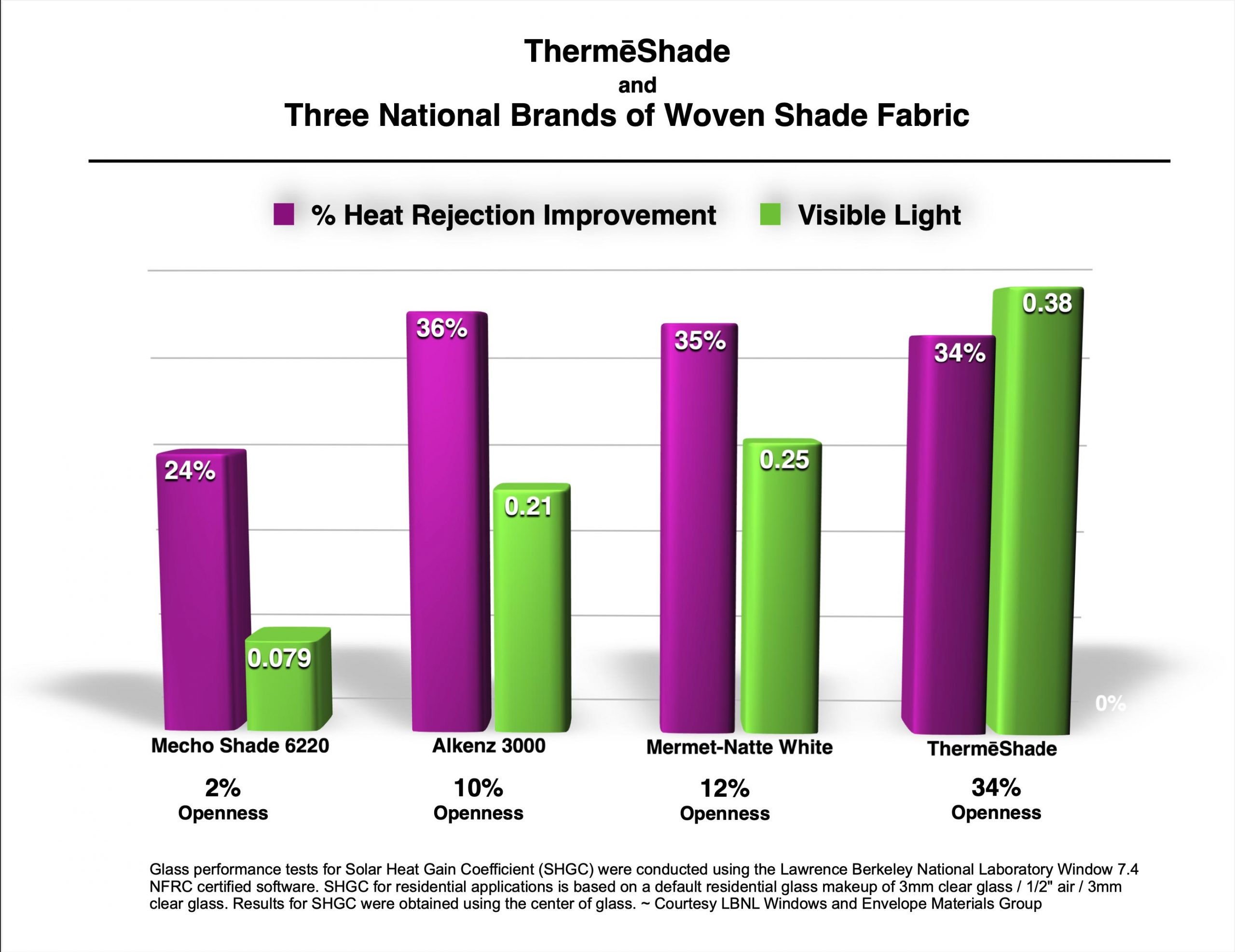
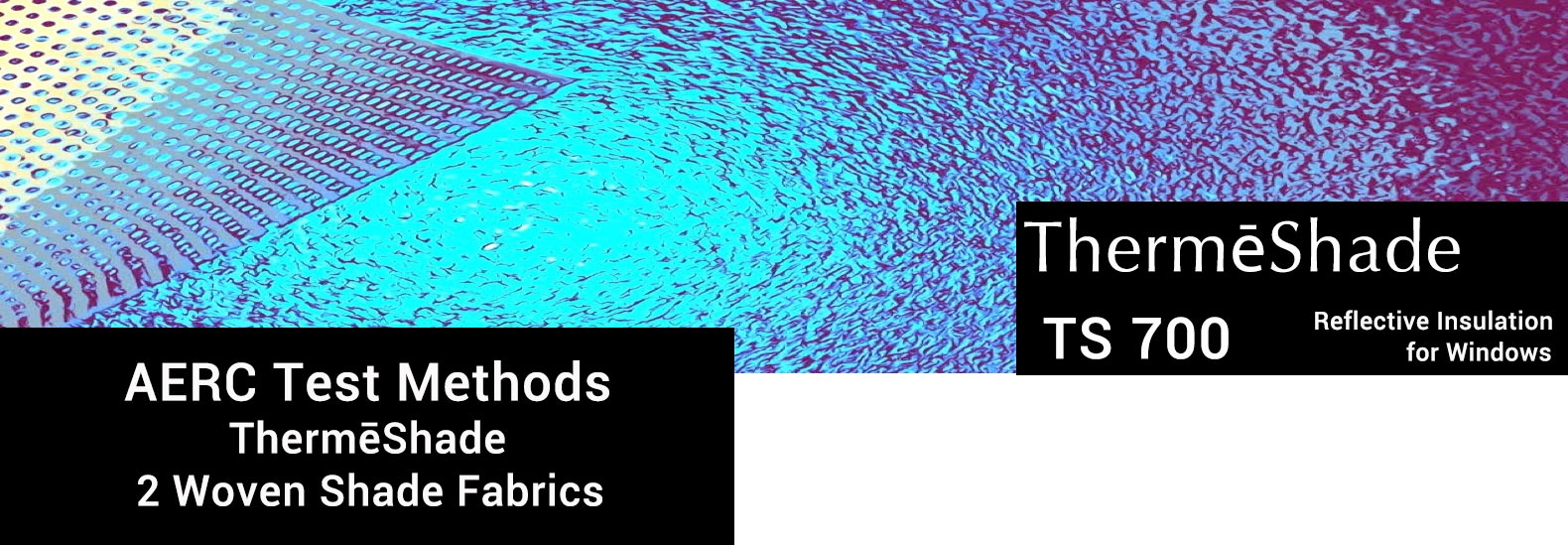
AERC 1 / AERC 2 / AERC 1.3
| Simulated File Name |
CGDB ID |
Openness | System Shading type |
AERC Baseline Window |
U-factor Btu/hr2/F |
SHGC | VT | EPc |
|---|---|---|---|---|---|---|---|---|
| ThermēShade TS 700 | 18000 | 34% | Perforated Screen | BW-B | 0.395 | 0.448 | 0.409 | 26 |
| Mecho EuroTwill | 15000 | 3% | Woven | BW-B | 0.330 | 0.380 | 0.066 | 20 |
| Mermet E-Screen | 47054 | 10% | Woven | BW-B | 0.456 | 0.348 | 0.137 | 30 |
Test Results:
Results with Shades Fully Closed for U–factor, SHGC, and VT, EP results are based on annual performance of shades fully closed and half-open for the cities of Minneapolis and Houston. See AERC 2 for more information about EP ratings — Peak Amplitude Consulting
Software Used:
Berkeley Lab WINDOW 7.8.28
THERM 7.8.16 AERCalc 1.3.9
